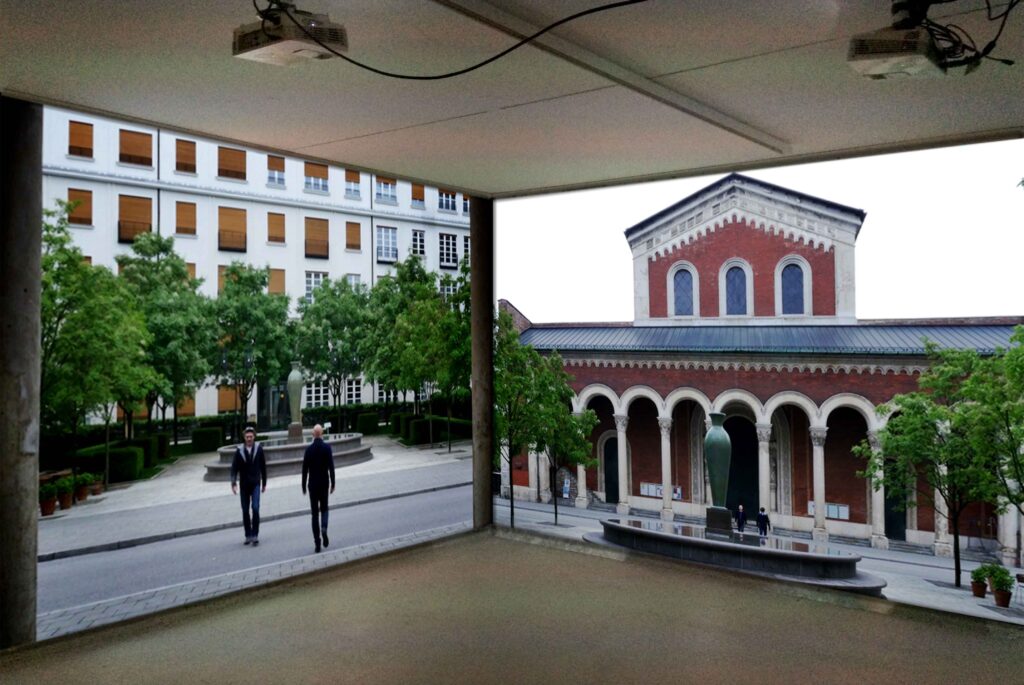Creditors and Debtors
dual-channel video installation, 2016
In their video installation “Gläubiger & Schuldner” (Creditors and Debtors), Empfangshalle enter a place where wealth and misery literally face each other. Not far from the Munich central train station (Hauptbahnhof) and close to the artist duo’s studio is the Abtei Sankt Bonifaz (Abbey of St. Boniface), which with its soup kitchen, clothing depot, showers and medical practice has served as a central point of contact for the homeless for many years. On the other side of the Karlstraße is the Lenbach Gärten, a comparatively new and most exclusive building complex that includes a 5 star hotel, office and residential buildings with concierge and doorman service.
And between them two men in dark clothing, crossing this Karlstraße in an endless loop, as if it were a threshold. While the path of the one leads from the abbey church’s holy water font to the fountain on the Piazzetta, the other’s path takes the opposite direction, from the Arcadia of a square in Mediterranean style monitored by a security service to the church portal, where the homeless camp at night under the arcade of the columned roof. The path of the two artists crosses briefly, but no interaction occurs. Their eyes remain on the respective destinations of their path: the fountain and the holy water font. There, they then perform a ritual of purification – the washing of hands performed by all cultures as purification of the body, and the sign of the cross with holy water that evokes Christian baptism as symbolic cleansing of (original) sin.
To be sure, the destination turns out to be no more than a way-station, as it seems as though neither of the two men is entirely at home in these spheres. In each case the other appears more attractive. And thus the path leads neither into the interior of the church nor into the private rooms of the luxury buildings. Empfangshalle doubles back, again and again, only to perform the purification ritual anew, once again, as if seeking to obliterate in the one place the traces of the other.
The paradox of rich and poor, materialism and spirituality co-existing side by side is captured in an image: the ritual that itself marks a threshold – hygiene as separation of public and private, and the re-enactment of baptism at the threshold between the profane and the sacred – is dissolved and becomes a walkover.
Markus Ostermair

